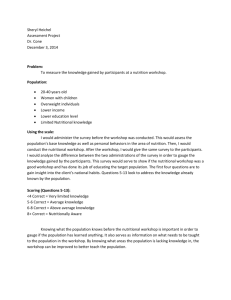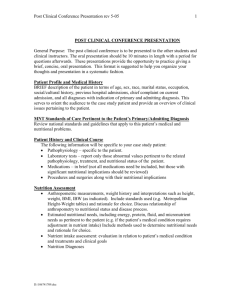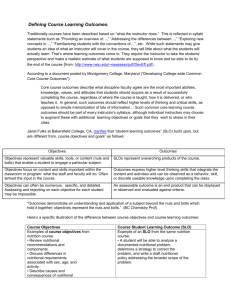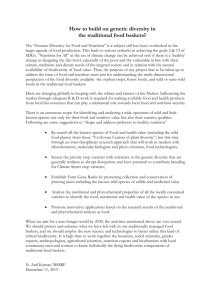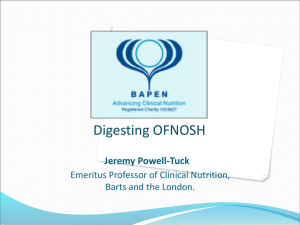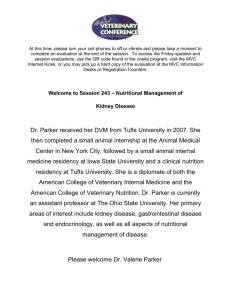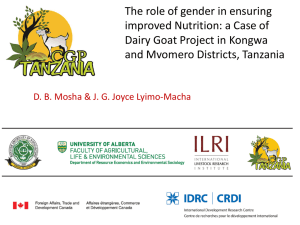Impact of Nutrition on the Health and Fertility of Dairy Cows
advertisement
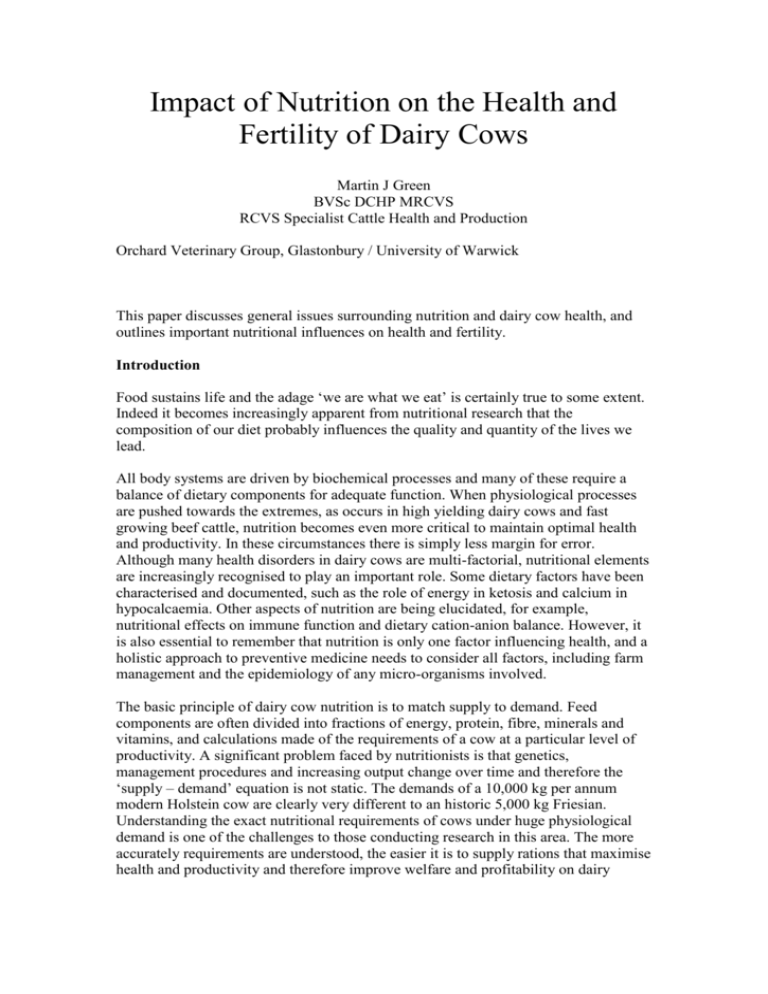
Impact of Nutrition on the Health and Fertility of Dairy Cows Martin J Green BVSc DCHP MRCVS RCVS Specialist Cattle Health and Production Orchard Veterinary Group, Glastonbury / University of Warwick This paper discusses general issues surrounding nutrition and dairy cow health, and outlines important nutritional influences on health and fertility. Introduction Food sustains life and the adage ‘we are what we eat’ is certainly true to some extent. Indeed it becomes increasingly apparent from nutritional research that the composition of our diet probably influences the quality and quantity of the lives we lead. All body systems are driven by biochemical processes and many of these require a balance of dietary components for adequate function. When physiological processes are pushed towards the extremes, as occurs in high yielding dairy cows and fast growing beef cattle, nutrition becomes even more critical to maintain optimal health and productivity. In these circumstances there is simply less margin for error. Although many health disorders in dairy cows are multi-factorial, nutritional elements are increasingly recognised to play an important role. Some dietary factors have been characterised and documented, such as the role of energy in ketosis and calcium in hypocalcaemia. Other aspects of nutrition are being elucidated, for example, nutritional effects on immune function and dietary cation-anion balance. However, it is also essential to remember that nutrition is only one factor influencing health, and a holistic approach to preventive medicine needs to consider all factors, including farm management and the epidemiology of any micro-organisms involved. The basic principle of dairy cow nutrition is to match supply to demand. Feed components are often divided into fractions of energy, protein, fibre, minerals and vitamins, and calculations made of the requirements of a cow at a particular level of productivity. A significant problem faced by nutritionists is that genetics, management procedures and increasing output change over time and therefore the ‘supply – demand’ equation is not static. The demands of a 10,000 kg per annum modern Holstein cow are clearly very different to an historic 5,000 kg Friesian. Understanding the exact nutritional requirements of cows under huge physiological demand is one of the challenges to those conducting research in this area. The more accurately requirements are understood, the easier it is to supply rations that maximise health and productivity and therefore improve welfare and profitability on dairy farms. Fully unlocking the secrets of dietary influences on health, production and reproduction would be great progress indeed. The Nutritionalist and the Vet! Although nutrition has an important influence on cow health, it is by no means the only influence. Because of this several problems tend to arise: 1. We as vets tend to focus on our strengths, e.g. The organism(s) Preventive treatments Some management issues Sometimes poor understanding of nutritional elements 2. Nutritional advisors tend to concentrate on their strengths, and this can result in Over-emphasis on nutrition at the expense of other aspects Sometimes bizarre claims, and lack of perspective! Furthermore, there is sometimes a lack of science surrounding some claims. 3. Vets and nutritionalists don’t share their expertise well enough! Main health topics in dairy cows Infertility, Mastitis, Lameness, Metabolic disease Infertility Important to keep perspective on factors causing infertility e.g: stockman (Heat detection, DIYAI), environment, semen / bull, disease (direct and indirect). Energy is the over-riding influence. The effects of negative energy balance (NEB) is far reaching and an example from one research project is shown below: % pregnant Days open NEB Cyst Serv/conc. Clin. ketosis Mastitis Lameness There are broadly 2 modes of action of NEB on fertility 1. Long term (60-80 days prior to ovulation) 2. Short term (1-2 weeks prior to ovulation) Cull Long term energy affect: Energy deficit 60-80 days before ovulation may Affect subsequent viability of egg Influence likelihood of abnormal oestrus cycles in the next lactation Energy deficit in the late dry period results in compromised hepatic function and this influences fertility Fat mobilisation and fatty infiltration of the liver are associated with milk fever mastitis endo/metritis displaced abomasum syndrome retained placenta infertility sub-optimal production Shorter term energy affect: Theories for this include Negative energy balance causes a suppression of pulsatile GnRH and LH secretion Negative energy balance reduces luteal function (lower progesterone concentrations) in 2nd and 3rd luteal phases. Effects on growth hormone and insulin leading to insulin-like growth factors productn (liver) and possible effect on: hypothalamic-pituitary system, ovary, reproductive tract and embryo. Monitoring energy balance is important and methods to do this include: DMI (Are they eating what you think) Production (Milk protein, yield) Fertility (Pregnancy rates, oestrus intervals = clues) Condition scoring*** Metabolic profiles Dung events Dietary Protein and Infertility Links not absolutely clear. Possible problems with excess EDRP in relation to FME Never exceed 19% CP in lactating diet? Minerals / Vitamins and Infertility Often over-rated as a cause of infertility Molybdenum (Cu) – important in a few specific geographical areas I (stillbirths, retained placenta, and subsequent reproductive problems) Se / Vit E (periparturient problems) Ca (indirect via hypocalcaemia) + nearly all others suggested (but generally unimportant), including Phosphorus Beta-carotene Vit A Cobalt Manganese Mastitis and Somatic Cell Counts PERSPECTIVE needed here because many factors are more important than nutrition in influencing mastitis. UK research has indicated, however, that trigger factors for mastitis may be important. Research suggests that the most important nutritional triggers are negative energy balance, vitamin E and selenium. Other less probable candidates include copper, zinc, vit A. Lameness Another highly complicated and multi-factorial disease, that cannot be solved solely through nutrition. Nutritional components are not all clear cut; Subclinical acidosis / lack of buffering? Changes around calving? Sudden changes of diet? Biotin clinically shown to reduce white line disease ? Zinc High carbohydrate (acute laminitis) - rarely an issue in dairy cows Metabolic disease a. Hypocalcaemia A primary nutritional disease but not only important for the clinical syndrome. Subclinical hypocalcaemia is associated with; Slow calvings Poor uterine function post partum Poor rumen function and DMI Prevention of hypocalcaemia, 2 basic methods; Calcium restriction (< 50g Ca and Mg ~ 50g) ? problems if K very high True DCAB diet mEq (Na+ + K+) - (Cl- + S2- ) Add anions to make ~ -50 to -200 Meq/kgDM Add Ca above to 80g – 150g? Measuring urine pH is essential to monitor the DCAB system. b. Displaced abomasa (DA) Risk factors (including nutrition) are poorly determined. Most likely nutritional elements are NDF and long chop fibre. Summary Nutrition is clearly important for dairy cow health, but needs to be seen in perspective with other risk factors for disease. Some nutritional claims would benefit from more substantial evidence and peer-reviewed research offers the best route to provide this evidence. Vets and nutritional advisors should work closely together to achieve best results for dairy cow health.
